Friday Flyer - February 21, 2025
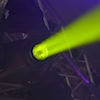
Spotlight on the 2025 KITP Teachers' Conference: This is Particle Theory
The Kavli Institute for Theoretical Physics (KITP) at UC Santa Barbara hosted a Teachers' Conference titled "This is Particle Theory" on February 8, designed for physics, physical science, math, and computer science teachers. Scheduled in conjunction with the KITP Program What is Particle Theory?, the conference introduced teachers to the latest developments in particle physics, including topics such as dark matter and the interplay between quantum mechanics and gravity. Participants had the opportunity to engage with leading physicists through lectures and informal discussions. Check out the full line-up on the KITP website, including links to the slides and videos of all of the talks. Next year's Teachers' Conference is scheduled for April 4, 2026 on the Multi-scale Physics of Normal and Diseased Heart.
On February 7, KITP hosted the workshop "Particle Physics in the Classroom," facilitated by QuarkNet staff with the assistance of several QuarkNet teachers and fellows. The workshop focused on how teachers can tap into the excitement of particle physics to both motivate students and provide a contemporary context for them to engage with topics and practices covered in introductory physics courses. We thank KITP for their support in making this workshop, attended by over 30 teachers from around the country, possible!
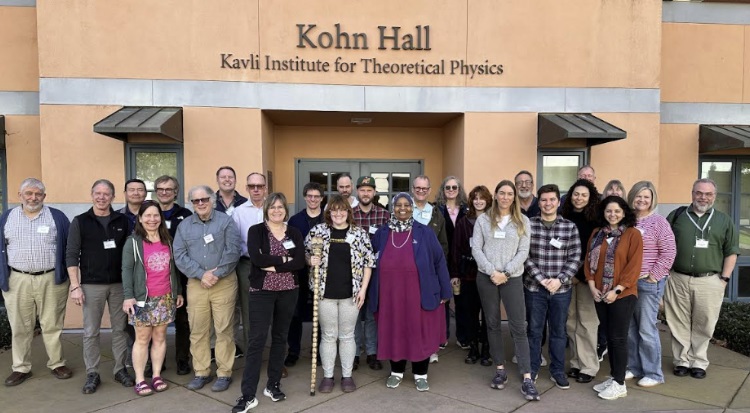
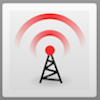
News from QuarkNet Central
International Muon Week 2025: IMW 2025 will take place March 2-8 this year. Join the search for changes in cosmic ray muon rate due to coronal mass ejection (CME) events from the sun! If you and your students would like to participate, please register here. More information will be provided on the IMW 2025 page . . . stay tuned for updates. If you have questions, contact Mark Adams (adams@fnal.gov).
Fermilab-based International Masterclasses 2025 Videoconferences: Please check out the Fermilab-based videoconference schedule to confirm the date and time (in US Central Time) of your masterclass videoconference. This schedule will be updated to include the Zoom links for the videoconferences.
New in IMC 2025...Report Your Results Online: Any group of students who participate in IMC25 can make a report of their results, then submit this report for all to see. This report can be created and submitted on the masterclass day or up to one week after using a Google form or, alternatively, by email. Once it is submitted and accepted, the report is listed in a table online. More information can be found on the Communicate Your Results page.
Beamline for Schools (BL4S): BL4S is a global competition for high school students offering winning teams the unique opportunity to conduct their own physics experiment at a CERN beamline. Check out the BL4S website for more information.
Apply to be a PhET Fellow: This opportunity is for K-12 educators based in Title 1 and CEP public schools in the U.S. Applications are due on March 1. (H/T Adam LaMee)
Center mentors and lead teachers: QuarkNet will begin sending out award letters to centers soon . . . but it's not too early to start thinking about dates and topics for teacher workshops this coming summer. Remember that QuarkNet has several National Workshops that QuarkNet staff and/or fellows can bring to your center. If you have any questions, please contact your QuarkNet staff member.
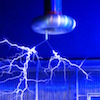
Physics Experiment Roundup
Toward the end of each year, the LHC collides lead ions rather than protons. Symmetry investigates how scientists get lead into the LHC. ATLAS physicists report observing a rare process involving the simultaneous production of three vector bosons, providing a unique opportunity to test the Standard Model's predictions and probe for new physics phenomena.
Neutrino researchers announce the measurement of a VERY energetic, record-setting, cosmic neutrino in the Mediterranean Sea. The energy of this particle was measured to be around 220,000 TeV, about 20 times more energetic than the previous record measurement. Read more about it in ScienceNews, Nature, or check out this episode of Science Friday.
Symmetry introduces us to four photographers who are working to capture the scale and significance of the Deep Underground Neutrino Experiment (DUNE). Fermilab News brings us a short video of the PIP-II coldbox on the move.
See Phys.org on a new X-ray experiment, and a breakthrough in high-energy particle detection.
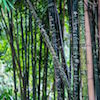
Resources
Symmetry brings us an article on why neutrinos rarely interact. Cosmos magazine tells us about a "nearby" Einstein ring. Phys.org on mapping the forces inside of a proton
Some of the free articles from the February, 2025 issue of The Physics Teacher include one on teaching core quantum concepts with Bloch cubes, one on the metabolism of running dinosaurs, and Jack Reacher and the Deployment of an Airbag.
Speaking of free...An open access book called Show the Physics was recently made available online and includes a collection of 99 demonstrations.
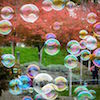
Just for Fun
Want to know how to cook tonight's pasta to perfection? Set aside those cookbooks and "how-to" videos and see what Physics Magazine has to say about it. Want to get even more nerdy in the kitchen? If so, then The Chemistry of Cooking may be just what you're looking for.
OK...back to physics. We mentioned the recently measured, record-setting cosmic neutrino above in the Roundup. XKCD asks and then answers a very important question relating to this measurement.
Happy Friday!
QuarkNet Staff
Mark Adams: adams@fnal.gov
Ken Cecire: kcecire@nd.edu
Spencer Pasero: spasero@fnal.gov
Shane Wood: swood5@nd.edu
